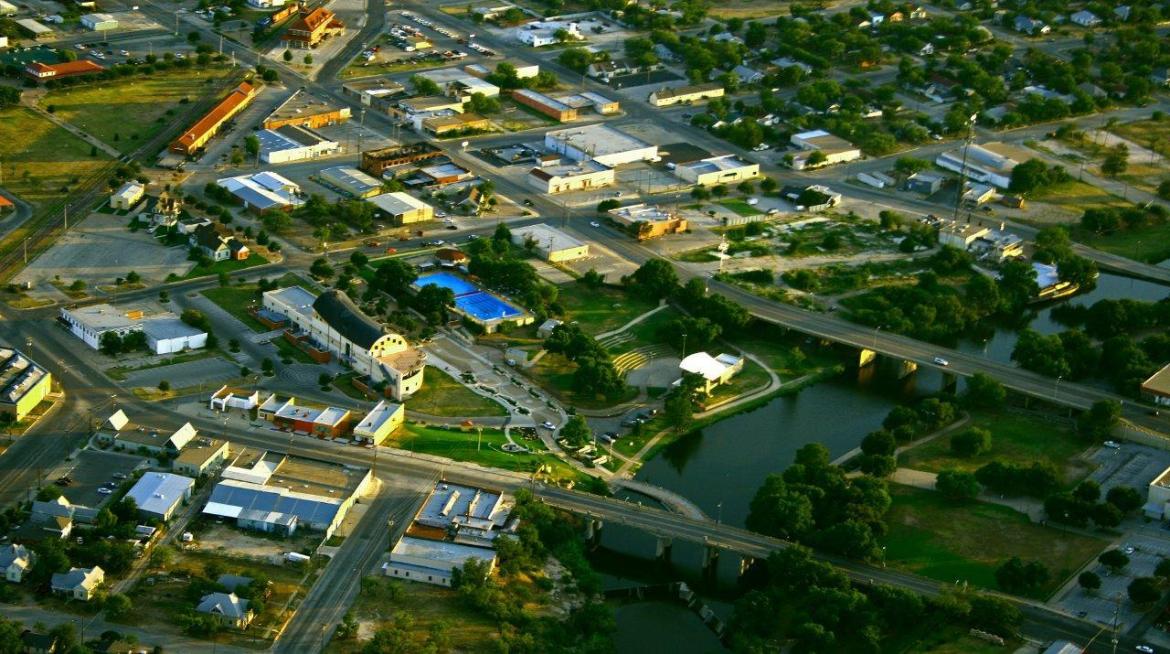Our Mission
The mission statement was adopted by the San Angelo Museum of Fine Arts Board of Trustees of February 9, 1995; based on the original written by the Founding Board in 1981.
"The mission of the San Angelo Museum of Fine Arts shall be to establish and maintain a museum in order to house and exhibit a permanent collection of art as well as to provide space for traveling exhibitions, for the purpose of the enjoyment and education of the general public in San Angelo, Texas, the rural communities of the Concho Valley, and the state of Texas*."
This statement has been regularly reviewed and serves as the guide for the goals and activities of the museum. It has been analyzed and the following are the key ideas that have been developed:
- "The general public" means all segments of the population including all ages, sexes, races, and creeds. It is the museum's intention to welcome and actively encourage attendance and participation by everyone.
- "San Angelo, Texas, and the rural communities of the Concho Valley" is defined as an area of 14 counties that use San Angelo as their marketing and social center. San Angelo has a more rural orientation than any city in West Texas and no other museum in the region has made a significant attempt to work with that audience.
- "A permanent collection" is considered vital. It is recognized that this is a small museum with limited resources. Major historical works are beyond our means. We will acquire contemporary art, ceramics, and the work of Texas artists.
- "Traveling exhibitions" will be used to bring to our audience a diverse view of the visual arts encompassing all periods and cultures.
- "For the purpose of the enjoyment and education of" underscores a commitment to an education program with emphasis on school-age children, because the children of the region have little exposure to the visual arts. Programs for adults and special audiences will also be undertaken.
- "Maintain a museum" means a commitment to meet the highest standards for exhibitions, environmental control, security, and support facilities.
*At the Annual Board Retreat, in the Spring of 2014, the Board of Trustees voted to add "and the state of Texas" based upon the fact that the museum collections have a strong and broad representation of Texas art. The museum is now the operational headquarters for a state-wide organization, CASETA, the Center for Advancement and Study of Early Texas Art, and that the museum regularly features the work of earlier and contemporary Texas artists. Also, our library now holds the Bill and Mary Cheek Early Texas Art Archives. We also market extensively across the state and draw substantial audiences from across Texas.
Our Vision
"To enhance the overall quality of life for all members of our community through art and educational programming."
We have adopted the slogan "We are not just about art on the walls but art in our lives, and the community is the greatest work of art."
Our History
The Museum was founded in 1981 and was located in the historic 1868 Quartermaster Building at Fort Concho National Historic Landmark. It opened in 1985 with exhibits from the National Portrait Gallery and the Library of Congress. The Museum has since held over 350 exhibits. Over 150 have featured Texas artists, half of which have been women and 1/3 minority. The overall exhibit program encompasses all mediums, cultures and time periods. Ceramics Monthly has cited the Museums’ biannual National Ceramic Competition as “the premier clay show in America.”
In 1992 and 2005 the Museum received the Citizen of the Year Award from the Chamber of Commerce. In 1995 the Museum was awarded The National Community Service Award from the American Institute of Architects. In 2003 the Museum received the National Award for Museum Service from the Institute of Museum and Library Services, the country’s highest honor for museums and in 2011 we received the Award of Excellence in Museums from the Texas Historical Commission.
The Museum’s audience in West Texas covers 18 counties. The population is 194,000 (15% rural) with San Angelo as the major trade center. San Angelo's population is 89,000 while most of the smaller surrounding towns have populations of 1,000-3,000. The nearest major metropolitan area is San Antonio located 230 miles away. Education programs are done in close collaboration with the local and outlying school districts. Up to 50% of children in the school district come to the Museum annually.
The Museum has an intense interest in the community manifested in exhibits held every five years beginning in 1985, called Visions and Choices. These exhibits allow everyone in the community to show their ideas for the community’s future. Many of the ideas have become tangible and resulted in massive efforts of preservation and renewal.
The Museum has a rapidly growing collection with 800 works of contemporary ceramics. There are also historical ceramic works from Asia and more than 60 contemporary paintings and sculpture by Texas artists. The collection includes over 100 major works of Spanish Colonial and Mexican religious art. The Museum has lent extensively to other museums in Texas.
$8,000,000 was raised for a new building which opened in 1999 that has received international acclaim. The Museum is implementing a new strategic plan, restoring older buildings that it owns for community use and is currently leading the development of a TCA designated 200 acre Cultural District.
Financials
The San Angelo Museum of Fine Arts is classified as a 501(c)(3) organization. Click below to view our most recent IRS Form 990.
2016 Statement of Financials

